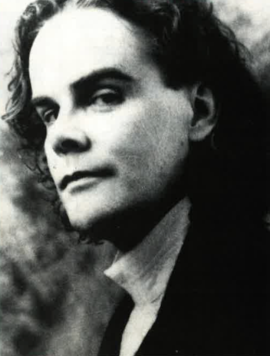Liz Ireland profiles Ireland’s classical composer Patrick Cassidy.
Mention Irish classical music to the average American academic, and you will probably be greeted with the arch query: “Is there any such thing?”
There is now. Enter Patrick Cassidy, the Co. Mayo native whose debut oratorio The Children of Lir, released in the U.S. on Celtic Heartbeat Records, not only charmed all Ireland and received a gold record there, but also garnered its composer a big Hollywood agent and publishing deal, as well as considerable attention from Europe.
The Children of Lir, based on the familiar legend from the Annals of Ulster, is a delight from start to finish. Its captivating Irish melodies beguile the casual listener, while serious music scholars can but bow their heads in deference to Cassidy’s meticulous, tactful use of classical period style and form. Scored for full orchestra, choir and vocal soloists as well as uilleann pipes and Irish harp, The Children of Lir is the first genuine masterwork to come out of the current Irish cultural resurgence.
Remarkably, Patrick Cassidy is a completely self-taught composer. Born in Claremorris, Co. Mayo, one of ten children whose father owned the local chemist’s shop, Patrick listened to traditional and classical music at home, but was also sent to piano lessons which constitute his only formal training. He developed early on the habit of analyzing music scores for fun, and happily studied the counterpoint of Palestrina alongside the Irish harper-composer tradition embodied by Turlough O Carolan. Any kind of music was fine by Patrick, who alternated between traditional and classical styles and even at one point played Jethro Tull covers in a rock band.
But though the Cassidy clan contained a number of enthusiastic musicians, Patrick was strongly counseled against pursuing higher musical education by his father when it came time to pick a university course. “He did think that there was no future in music, and he was thinking of my getting a qualification, so he told me to do math instead of music at the university. In Ireland parents can still use that kind of control; it’s not like America!” Patrick laughs. Patrick thus dutifully studied Applied Mathematics at the University of Limerick, obtaining a Master’s Degree and subsequently taking a job in Dublin with Irish Marketing Surveys as a statistician. But he found time to release his debut album, Cruit, a collection of melodies by Carolan and other harpers for a baroque chamber ensemble which included Cassidy himself on Irish harp. It was the first step in a musical direction which would find full fruition with The Children of Lir.
After Cruit, Cassidy bravely chucked in the statistics to compose full time. His brother Frank became his manager, and the two shared a small apartment as well as the ups and downs associated with beginning a musical career. Food was scarce, and The Children of Lir went unperformed until a generous grant from the Irish-American Cultural Institute funded its debut performance in Dublin. A domestic record contract followed, and upon the CD’s release, it became obvious that here was a major new composer, dedicated to recombining the fragmented, devalued bits and pieces of Irish musical history into a coherent pattern for the future.
Classical purists might find it preposterous to attempt to combine serious music with Irish traditional music. But to Cassidy, it was simply the logical thing to do. “A lot of Irish classical musicians grow up in an environment where traditional music isn’t serious music; Irish music is for dancing to at the crossroads, and serious music is what you learn in school. And so they’ve got no soul! But if you listen to the great composers, like Bach – he’s so German! And Vivaldi, he’s so Italian! It made perfect sense to me to write what I did.”
Cassidy’s latest work is Deirdre of the Sorrows soon to be released in the U.S. “It’s a stunning story,” he says. “Musically it’s quite different from The Children of Lir in that it is almost completely diatonic [i.e. modal], so it sounds a lot older. I think it might sound even more Irish than The Children of Lir, but then what I think of as being Irish not a lot of other people might!”
At the moment, Cassidy has as much work as he can handle, and he’s quite delighted by that. There’s his first Hollywood film score, The Boys from Mercury along with several commissions for classical pieces, most notably one from St. Patrick’s Cathedral in New York City for a Piece on the Irish famine, which will debut there March 2.
Constantly fizzing with ideas, he has plenty of things he’d like to get around to: find and learn to play a true, metal-stringed Irish harp; write a requiem; write a mass, may be even two, one in Irish and one in Latin (“They’re both such good language!”). “Oh, well,” he sighs. “May be someday.”
Editor’s Note: This article was originally published in the January/February 1996 issue of Irish America. ⬥


Leave a Reply